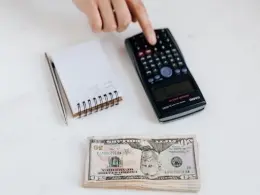The move to ban currency notes of Rs 500 and Rs 1,000 is the biggest step of Modi government to eradicate fake currency being used for terrorism, and black money and curb corruption in India (estimated worth of currency in circulation comprising these two notes is Rs 15 lakh crore or around 88% of total currency presently in circulation). This comes immediately after the recently concluded Income Disclosure Scheme (IDS) under which Rs 65,250 crore was declared.
This may prove difficult in the short run as cash is required for day-to-day operations by common man but this decision will favour all honest taxpayers and will hurt tax evaders and black money holders. I fully support this surgical strike on black money by the government. All those with a clear source of money can go ahead and deposit it in banks/post offices till December 30 by filling a simple form and giving an ID proof. However, those who don't have a clear source of money and deposit high amounts could be scrutinised and subjected to tax and penalty. The government has cautioned the public to not allow using their bank accounts for depositing black money belonging to others as a thorough scrutiny will be done by the government for deposit of larger amounts.
This move will impact a lot of unorganised sectors and small businesses (including small real estate developers as there is always an element of cash in secondary sales in real estate transactions). The number of real estate deals and prices in real estate secondary sales are expected to fall further as those in distress may like to liquidate their holdings. Overall, it is negative for the otherwise struggling real estate sector. The involvement of the cash component in realty space has made real estate unaffordable for a majority of Indians. This move will create transparency in the longer term but for the movement property sales will dip like anything and eventually prices are expected to fall. The affordable housing segment will, however, continue to see sales going forward and more developers could come into this segment.
Those doing cash businesses—for instance, jewellery dealers, may, however, benefit as 80% of their dealing is in cash. They can use this opportunity to buy these notes at a discount and convert it into jewellery. Depending on their cash balance, they can then justify the cash income and deposit it in banks. This also happened in 1978 when the then government demonetised high value currency notes. As is evident, the prices of precious metals have already risen 10-15% and a lot of currency is being exchanged for jewellery. Needless to say, they would have to substantiate the source of money and jewellers have been asked to obtain PAN for transactions above Rs 2 lakh.
It is clarified by the government that ITR of all those who deposit more than Rs 2.5 lakh in their bank accounts in this 50-day period would be scrutinised and 200% penalties would be imposed on tax evaders.
The message is loud and clear. The future belongs to a cashless economy. Certainly, this is a big move in favour of the digital economy and credit cards/debit cards/wallets and UPI interface would benefit the most.
This will certainly cheer the middle class salaried class and honest taxpayers though there will be short-term pain and chaos for all individuals and small businesses as a large part of Indian business is heavily dependent on cash on a daily basis. But this is a big positive step taken as part of the government’s effort to crack down on black money and corruption. Even if 50% of these old currency notes get into the system, bank deposits would see significant increase and improve banking sector liquidity. This may also give a fillip to the government’s financial inclusion push. It may hurt the near term consumption demand but would help in curbing inflation. Needless to say, it would boost the government’s tax collection targets.
Chander Sawhney is partner at Corporate Professionals Capital Pvt. Ltd. Views are his.
Like this column? Sign up for our daily newsletter to get our top reports






